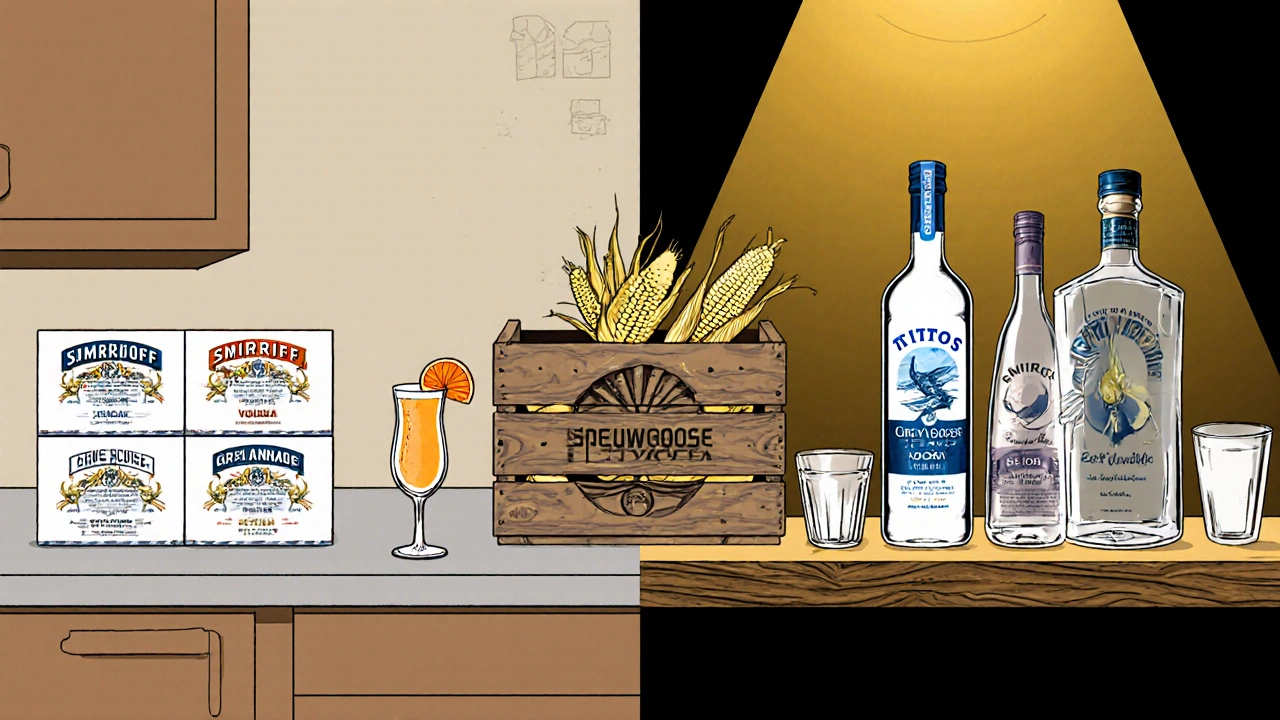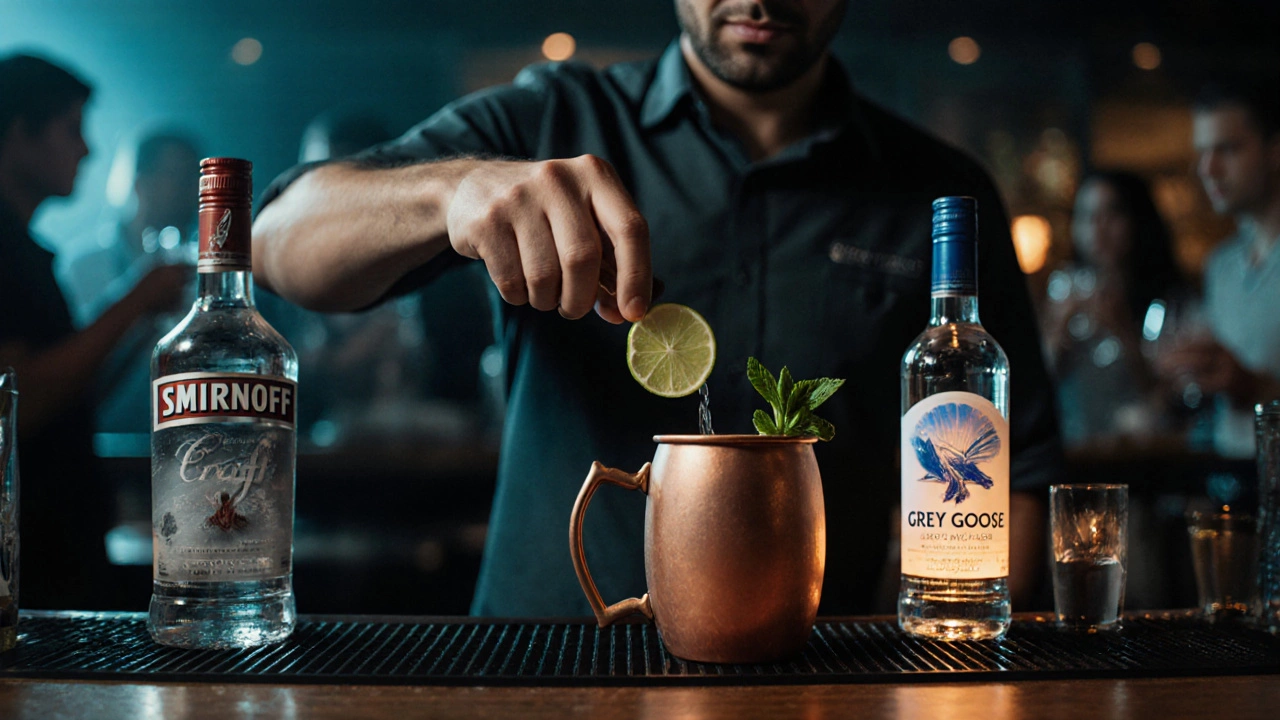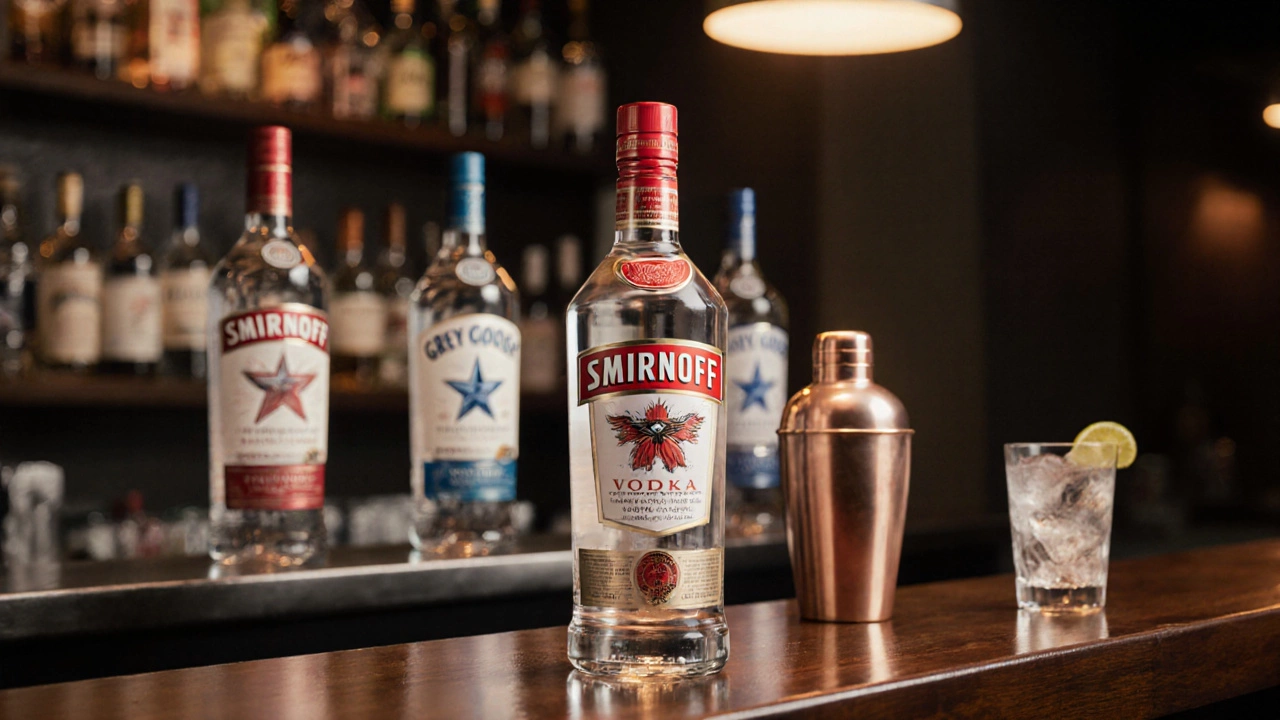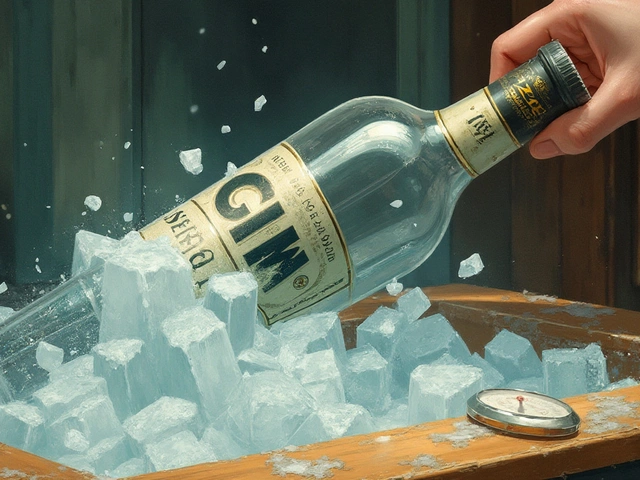Vodka Cost Comparison Tool
Calculate Your Vodka Cost
Compare the cost of your vodka against top-selling US brands
Cost Comparison
Your Vodka
Top US Brands (2024)
When you hear the word Vodka a clear, distilled spirit made from grains, potatoes or rye, you probably picture a sleek bottle on a bar shelf. But which bottle actually flies off the shelves the most in the United States? In this deep‑dive we’ll unpack the latest sales data, taste trends, and cultural factors that decide America's favorite vodka. By the end you’ll know the top‑selling brand, why it dominates, and how you can pick the right vodka for your next cocktail.
How the US Vodka Market is Measured
Industry analysts track vodka popularity through three main lenses: wholesale case volume, retail dollar sales, and bar‑order frequency. The Beverage Information Group (BIG) publishes quarterly reports that break down "cases sold" by brand, and NielsenIQ adds a price‑adjusted view that accounts for premium pricing. For our ranking we combined 2024 case volume (in millions) with 2024 retail dollars (in millions) to get a balanced picture of both volume and revenue.
Top Five Vodkas in America (2024)
| Brand | 2024 US Cases (millions) | 2024 Retail Sales (US$ M) | Average Price per Bottle (US$) | Key Flavor Profile |
|---|---|---|---|---|
| Smirnoff the world’s best‑selling vodka | 33.8 | 1,210 | 12.5 | Clean, slightly sweet |
| Tito's Handmade Vodka artisan spirit from Texas | 15.4 | 720 | 17.0 | Rich corn‑mouthfeel |
| Absolut Swedish vodka known for its smoothness | 12.1 | 560 | 15.2 | Neutral, slightly grainy |
| Grey Goose premium French vodka | 6.3 | 420 | 30.5 | Soft, subtle wheat notes |
| Ketel One Dutch malt‑based vodka | 4.9 | 310 | 28.0 | Crisp, slightly citrus |
Smirnoff tops the list by a wide margin, selling nearly twice as many cases as the next competitor. Its market‑share edge comes from aggressive pricing, a massive distribution network, and a brand that’s been on U.S. shelves for over a century.
Why Smirnoff Leads the Pack
Three factors drive Smirnoff’s dominance:
- Price accessibility: At roughly $12 per 750 ml bottle, it fits the budget of casual drinkers and large‑scale cocktail bars alike.
- Flavor consistency: The brand’s “Neutral Grain” recipe delivers a reliable, clean taste that works in everything from a Moscow Mule to a filtered water drinker’s “highball”.
- Marketing muscle: Partnerships with festivals, sports events, and an expansive social‑media push keep Smirnoff top‑of‑mind for younger consumers.
In addition, Smirnoff’s parent company, Diageo, invests heavily in supply‑chain efficiency, ensuring shelves stay stocked even during seasonal spikes.
The Rise of Craft Vodka: Tito's as a Case Study
While Smirnoff remains the volume leader, the premium and craft segment has surged. Tito's Handmade Vodka boasts a rapid growth curve grew its U.S. case volume by 28 % in 2023‑24, propelled by a “Made in America” narrative and a reputation for smoothness derived from corn fermentation.
Bar owners love Tito’s for its clean finish, which pairs well with citrus‑forward cocktails without adding unwanted grain notes. Its pricing sits between the economy and premium tiers, making it a favorite for mid‑range venues looking to impress without breaking the bank.
How Consumer Trends Shape Vodka Preferences
Three broader trends influence what Americans buy:
- Health‑conscious mixology: Low‑calorie, low‑sugar cocktails (think “skinny” Moscow Mules) drive demand for neutral‑taste spirits that won’t overpower fresh ingredients.
- Premiumization: Millennial and Gen‑Z drinkers are willing to pay extra for perceived quality, boosting sales of Grey Goose and Ketel One.
- Local storytelling: Brands that tie their identity to a region-like Tito’s (Texas) or New York‑based Skyy Vodka marketed as "clear" and "smooth"-gain loyalty from shoppers who value authenticity.
These trends also explain why flavored vodkas, once a niche, now account for roughly 12 % of total vodka sales in the United States.

Choosing the Right Vodka for Your Needs
Not every occasion calls for the best‑selling brand. Here’s a quick cheat‑sheet:
- Everyday mixed drinks: Stick with Smirnoff or Absolut for value and consistency.
- Premium sipping: Grey Goose or Ketel One deliver a smoother mouthfeel for neat or on the rocks.
- Craft cocktail bars: Tito’s offers a pleasant corn‑character that adds depth without overwhelming nuanced flavors.
- Low‑calorie options: Choose a vodka that lists “0 g carbs” on the label, such as Skyy or a plain Smirnoff.
Remember, proof matters too. Most U.S. vodkas sit at 80 proof (40 % ABV). Higher‑proof variants (90‑100 proof) can give a stronger bite, which some bartenders prefer for robust cocktails.
Future Outlook: Will Smirnoff Stay on Top?
Industry forecasts suggest two possible scenarios:
- Continued dominance: If Diageo maintains its pricing strategy and expands low‑calorie product lines, Smirnoff could hold a ~30 % market share through 2028.
- Shift to premium: Should health‑centric consumers keep gravitating toward higher‑proof, smaller‑batch spirits, brands like Tito’s and Grey Goose could close the gap, especially if they tap into e‑commerce growth.
The key takeaway: while sales numbers may wiggle, the overall shape of the market is moving toward a split between value‑driven and experience‑driven purchases.
Quick Reference: Vodka Buying Checklist
- Check the label for proof (80 proof is standard).
- Consider price per 750 ml bottle versus expected usage.
- Match the brand’s flavor profile to your cocktail recipes.
- Look for “Made in USA” if local sourcing matters to you.
- Read the back‑of‑bottle for any added sugars or flavorings.
Which vodka sells the most in the United States?
Smirnoff remains the top‑selling vodka in the U.S., moving about 33.8 million cases in 2024, well ahead of the nearest competitor.

Why is Tito's Handmade Vodka so popular?
Tito's blends corn‑based fermentation with a small‑batch image and a mid‑range price, giving it a sweet spot between value and craft appeal.
Is there a significant price difference between premium and economy vodkas?
Yes. Economy brands like Smirnoff average $12 per bottle, while premium labels such as Grey Goose often exceed $30.
Do flavored vodkas count toward the "favorite" ranking?
Flavor sales are tracked separately, but they make up about 12 % of total U.S. vodka volume, so they influence overall market dynamics without displacing the top neutral‑flavor brands.
How can I tell if a vodka is truly "premium"?
Premium vodkas typically use higher‑quality grains or potatoes, undergo multiple distillations or filtrations, and charge $25 + per 750 ml bottle. Look for clear labeling about the production process.


